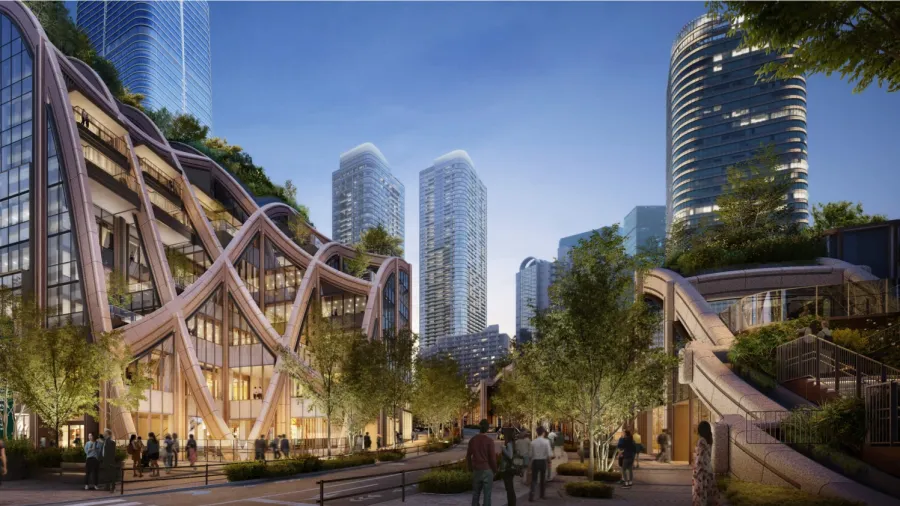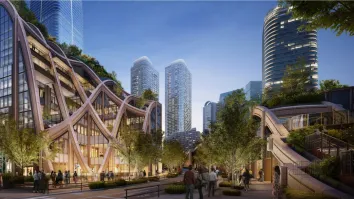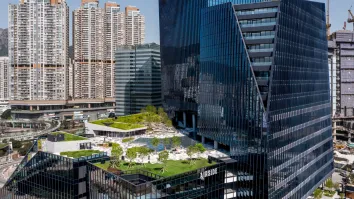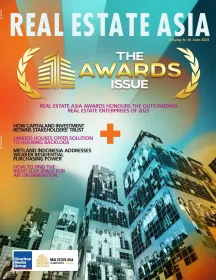
What property developers can learn from Japan’s Azabudai Hills
The US$4b development seeks to become an international hub for foreigners and VCs.
Japan’s newest composite redevelopment Azabudai Hills may just serve as an important cornerstone to Tokyo’s ambitions of being seen as an attractive international destination.
Pre-pandemic, the site was still an aging district of old houses. Now— following thirty years of planning and over US$4b in investments– the eight-hectare site has been redeveloped into a modern mix of residential, official, and commercial spaces, crafted with the international in mind. Amenities include an international school, an English-speaking hospital, luxury residential units, commercial spaces and underground footpaths, and even a planned hub for venture capital and commercial venture capital (CVC) firms.
The famous interactive art and light museum teamLabs borderless is also relocating within the complex and opened in February 2024.
The site was redeveloped with maintaining Tokyo’s green spaces in mind, with vertical gardens and parks making up 2.4 hectares of the complex.
Urban redeveloper Mori Building Co. hopes that its newest brainchild Azabudai Hills will become the choice living and working destination for both Japanese people and foreign expats– and for startups looking to scale operations in Tokyo, a spokesperson of the company told Singapore Business Review.
ALSO READ: Guess which city led APAC logistics rental growth in H2 2023
Innovation Hub
What differentiates Azabudai Hills from the typical residential or office development is its commitment to make the 8.1-hectare space central to Tokyo’s booming startup industry.
A Mori Building Co. spokesperson shared that they are inviting at least 70 investment firms to set up shop in the complex.
“They [Mori Building] have opened “Tokyo Venture Capital Hub”,which is 3,600㎡. Also, they are inviting 20 venture capitals, and 50 commercial venture capital firms in the area,” a spokesperson told Singapore Business Review through a translator.
In addition, Azabudai Hills is estimated to offer 214,500 square meters of office space for companies in various industries.
This is a win-win situation for either side, as the complex is notably near CIC Tokyo, a self-touted”innovation” campus offering flexible working spaces for startups, which is currently home to 250 companies, investors, and government offices.
With Japan looking to invest JPY10 trillion in its startup industry and support both foreign and domestic companies, startup founders and expats moving to Tokyo may find that Azabudai Hills is the right place for their business needs and personal lives.
Close to 1,400 residential units will be available within Azabudai Hills. Residential contracts will be offered in the English language as well, the spokesperson said.
Some of these residential and office spaces would be located at the focal point of the development: the Mori JP Tower. Standing approximately 330 meters tall, just three meters shy of eclipsing the iconic Tokyo Tower a few blocks away, the Mori JP Tower will feature office spaces below and luxury residential units will be available on the top floors, operated by a luxury resort operator.
The British School in Tokyo is also being set-up within the development, as well as a nursery. Keio University Hospital’s Center for Preventive Care has also moved within the complex, and will test operations beginning November 6.
Thirty years of lead up
Before full-time construction of the US$4b development could commence in 2019, however, the Azabudai Hills project traces its roots back to 1989. Back then, the site was–in Mori Building Co.’s own words–a “long, narrow district running from east to west, originally broken up by hills and valleys in a convoluted terrain.”
At the time, the site was populated by some 300 landowners living in small wooden houses and low buildings. Dozens of committee meetings were held with landowners to reach an agreement on the redevelopment of the land.
These landowners were not left out from the redevelopment of the land where their houses used to sit: former residents were given units in one of the new residential buildings of Azabudai Hills. Some have even opted to rent out the new living residences and live in other places, a spokesperson said.
The rest of the site was then redeveloped into what it is today: Tokyo’s newest business and luxury residential district, with buildings and terrain crafted by English architect Thomas Heatherwick, best known for being designing the 2012 London Olympic cauldron.
Heatherwick is known for his designs that balance modern architecture and green spaces, a feature that is very much present in Azabudai Hills: when the development opens in November, visitors and residents will get to enjoy a combined total of 2.4 hectares of green areas– including vertical gardens.
Bigger and bigger
This was not urban landscape redeveloper Mori Building’s first venture into redeveloping– or by its spokesperson’s own terms, revitalizing– old properties in Tokyo. Before Azabudai Hills, Mori Building had already kicked off one well-known development project: Roppongi Hills.
Mori Building Co.– who is also behind the interactive art and lights museum MORI Building DIGITAL ART MUSEUM: teamLab Borderless– made its first splash in the redevelopment game with the approximately 12 hectare development Roppongi Hills. It took the company 17 years of conceptualizing, working with over 400 rights owners to the site, and finally construction, to successfully launch what was been touted as Japan's largest-ever urban redevelopment by the time it opened in 2003.
Meanwhile, the company has also been developing the nearby Toranomon Hills. Similar to Azabudai Hills, Toranomon Hills 7.5 hectare area is aimed at becoming a mixed-used international hub and global business center, offering 305,000 square meters of office space and approximately 730 residential units. The Station Tower, a 266-meter high building, just opened its doors on 6 October– marking the completion of the Toranomon Hills development.
In the future, Mori Building Co. shared that they are looking to revitalize other areas of Tokyo into international hubs and business districts, although they were tight-lipped on which places would be next redeveloped.


















 Advertise
Advertise


